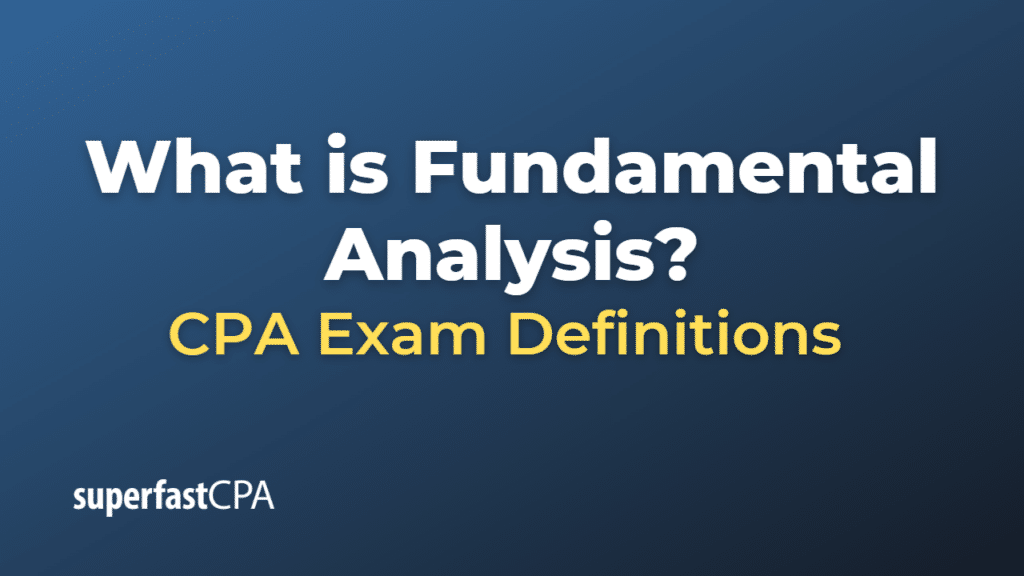Fundamental Analysis
Fundamental analysis is an approach used by investors to determine the intrinsic value of a security, such as a stock, bond, or any other investment. It involves examining related economic, financial, and other qualitative and quantitative factors. The objective is to make investment decisions based on the true value of the investment and its potential for future earnings.
Here are some key components typically considered in fundamental analysis:
- Economic Analysis: This involves looking at the overall state of the economy and factors like interest rates, inflation rates, political stability, economic indicators like GDP growth, unemployment rates, etc.
- Industry Analysis: This involves examining the current trends and conditions in the industry in which the company operates, its position in the industry, and factors like competitive landscape, market size, and growth.
- Financial Analysis: This involves examining a company’s financial statements (income statement, balance sheet, and cash flow statement) and analyzing ratios and metrics like earnings per share (EPS), price-to-earnings ratio (P/E), return on equity (ROE), debt-to-equity ratio (D/E), and others.
- Company Analysis: This involves looking at the company’s management team, its business model, products, competitive advantages, and other factors.
Investors who use fundamental analysis believe that the market may misprice a security in the short run but that the “correct” price will eventually be reached. Prices can be affected by investor sentiment and other external factors, but these are seen as temporary influences. In contrast, the intrinsic value of the security, which is determined by the underlying fundamentals, is what matters in the long run.
Fundamental analysis is often contrasted with technical analysis, which focuses on patterns in price movements, trading volume, and other market factors to predict future price trends. While fundamental analysis looks at what a security should be worth, technical analysis looks at what the security’s price is likely to do. Both methods can be used separately or in combination depending on the investor’s approach.
Example of Fundamental Analysis
Let’s say an investor is considering buying shares of a company, let’s call it “Company XYZ”. They decide to conduct a fundamental analysis to determine whether the current market price of the shares accurately reflects the intrinsic value of the company. Here’s how they might approach this:
- Economic Analysis: The investor first looks at the overall economy. They notice that the economy is currently in an expansion phase, with low unemployment, stable inflation, and healthy GDP growth. This bodes well for most companies, including XYZ.
- Industry Analysis: Company XYZ is in the technology sector, which is currently booming due to increased demand for remote work solutions amidst ongoing global events. The industry is competitive but also growing rapidly. This suggests good prospects for XYZ, assuming it has competitive products and a solid market share.
- Financial Analysis: The investor next examines Company XYZ’s financial statements. They note that the company’s revenues and earnings have been growing steadily over the past few years. The company’s debt levels are manageable, and it has good profit margins. Key financial ratios, like P/E and ROE, are also favorable compared to industry averages.
- Company Analysis: Finally, the investor evaluates the company itself. They note that Company XYZ has a strong management team with a proven track record. The company’s products are well-reviewed and have a loyal customer base. The company is also investing in research and development, which bodes well for future growth.
Based on this fundamental analysis, the investor determines that Company XYZ is in a strong financial position, has solid growth prospects, and is likely undervalued at its current market price. Therefore, they decide that it’s a good time to buy the shares.
Of course, this is a simplified example. In reality, fundamental analysis would involve a much more detailed examination of these and other factors, and the decision-making process might not be as straightforward. But this should give you an idea of how fundamental analysis works in practice.













